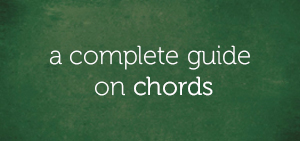If you’re interested in learning how top players reharmonize melody notes, then you’re on the right page.
Attention: A vast majority of musicians who will find this lesson helpful are intermediate musicians and this is because this lesson is written with them in mind.
The reharmonization of melody notes is one of the tools top players use to create sophisticated harmonies that turn heads. I’m very certain you’ve seen piano greats pick up boring melodies and TOTALLY transform them into something else and you’re also interested in figuring out the “why” behind “what” they’re doing.
If you’re just coming across the term reharmonization for the first time, this lesson is for you because we’re starting out with the definition of reharmonization.
A Short Note On Reharmonization
Reharmonization is the modification of the basic harmonic structure of a song.
The chords and progressions in any given song is what determines its harmonic structure. Using the generally acceptable approach, melodies can be harmonized and the harmonization produces the harmonization of the song.
To go beyond the basic or generally acceptable way of harmonizing a song into using other chord options to replace basic chords produces reharmonization.
Reharmonization is basically a tool that top players use to spice up their playing by substituting boring chords with interesting ones.
The melody of Twinkle Twinkle Little Star can be reharmonized thus in the key of C major…
Twin:
…kle:
Twin:
…kle:
Li:
…tle:
…star:
I’m going to show you how top players reharmonize melody notes, transforming them from ordinary to extraordinary.
Attention: To learn more about this, I recommend our 500+ page course: The “Official Guide To Piano Playing.” Click here for more information.
How Top Players Reharmonize Melody Notes
Reharmonization Of The Major Scale
Before we end this lesson, it is important for us to apply what we’ve learned. So, we’ll be reharmonizing the C major scale:
…using extended chords.
The first tone (which is C):
…can be reharmonized using the C 6/9 chord:
The second tone (which is D):
…can be reharmonized using the E dominant seventh [b9, b5] chord:
The third tone (which is E):
…can be reharmonized using the A minor ninth chord:
The fourth tone (which is F):
…can be reharmonized using the A dominant seventh [#9, #5] chord:
The five tone (which is G):
…can be reharmonized using the D dominant eleventh chord:
The six tone (which is A):
…can be reharmonized using the Ab dominant seventh [b9, #5] chord:
The seventh tone (which is B):
…can be reharmonized using the G dominant thirteenth [b9] chord:
The eighth tone (which is C):
…can be reharmonized using the C 6/9 chord:
Attention: To learn more about this, I recommend our 500+ page course: The “Official Guide To Piano Playing.” Click here for more information.
Final Words
We all walked before running.
Therefore, before learning the concept of reharmonization, it is important for a keyboardist to have a proper understanding of harmonization. This is because reharmonization requires a certain degree of harmonization.
Keep up the great work!
Chuku Onyemachi
Latest posts by Chuku Onyemachi (see all)
- The Formation Of Diminished Seventh Chords Used To Be Challenging Until I Did This
- How To Form Seventh Chords In Two Shakes Of A Dog’s Tail Using Third Intervals And The Circle Of Fifths Chart
- I Played The 13sus4 Chord And This Happened…
- How To Build Seventh Chords Like An Architect Using “Foundation And Structure” Concept
- This 4-Week Plan Will Help You Master All The Major Scales







Comments on this entry are closed.